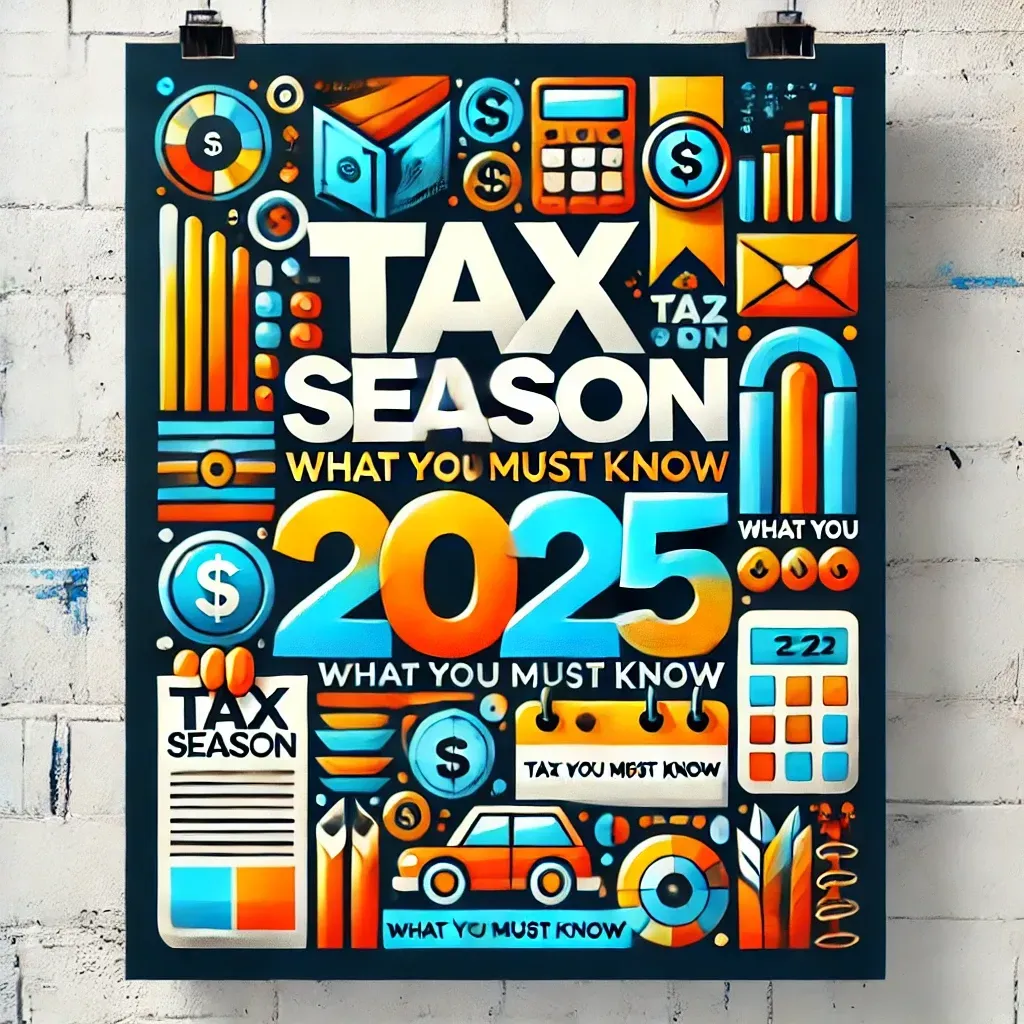JOEL.VIP Blog

Tax Season 2025: What you Must Know
“By failing to prepare, you are preparing to fail.” - Benjamin Franklin
It’s That Time Again—Tax Season!
Yep, it’s tax season again. (Cue the groans.) Between deductions, tax credits, and figuring out which forms you need, filing your taxes can feel like a giant puzzle. But don’t stress! We’re breaking it all down to make this as simple as possible.
Let’s start with the key things you need to know for the 2025 tax season:
Tax Filing Deadline: All tax returns are due by April 15, 2025. If you owe taxes for 2024, those payments are also due by this date.
Extension Deadline: Filing for an extension? Your new deadline is October 15, 2025. But remember, any taxes owed are still due by April 15—no extensions on payments!
Standard Deduction Increase: For 2024, the standard deduction is $14,600 for single filers and $29,200 for married couples filing jointly.
Adjusted Tax Brackets: The income tax brackets have been adjusted for inflation, but the rates remain the same—starting at 10% and topping out at 37%.
That’s just the tip of the iceberg. Let’s dive deeper into what you need to know to file confidently this year.
When Can You Start Filing?
Tax season usually kicks off in late January. By then, you should receive your W-2 from your employer (check your mailbox or online payroll system). Freelancers should also look out for 1099 forms from clients.
Other forms you might need:
Mortgage interest statements
Investment income statements
Charitable contribution receipts
If you plan to itemize your deductions, now’s the time to gather those receipts—before the last-minute scramble!
Key Tax Deadlines
Don’t forget: April 15, 2025 is Tax Day. This means your tax return and any payments owed are due. Miss the deadline, and you could face penalties for failing to file or pay on time.
If you need more time to file (say, you’re waiting on a form), request an extension. This pushes your filing deadline to October 15, 2025. But remember, any taxes owed are still due by April 15, even if you get an extension to file.1
1 - https://www.irs.gov/pub/irs-pdf/p509.pdf
Pro Tip: Don’t wait until the last minute! Gather your forms early and consider reaching out to a tax pro if things get tricky. Getting your taxes done ahead of time means April 15 can just be another spring day.
Tax Year vs. Tax Season
Here’s a quick refresher:
Tax Year: The year you earned your income (e.g., 2024).
Tax Season: The period when you file and pay taxes for the previous tax year (e.g., the 2025 tax season is for the 2024 tax year).
Got it? Let’s keep going.
2024 Income Tax Brackets and Rates
Your tax rate depends on the tax bracket your income falls into. For 2024, brackets have been adjusted slightly for inflation:

4 - https://www.irs.gov/irb/2023-48_IRB#REV-PROC-2023-34
For example, if you’re single and earn $75,000, part of your income is taxed at 10%, another at 12%, and the rest at 22%.
Standard Deduction for 2024
You can either take the standard deduction or itemize your deductions. Here’s the standard deduction for 2024:

5 - https://www.irs.gov/newsroom/irs-provides-tax-inflation-adjustments-for-tax-year-2024
Deductions and Credits to Know
Deductions and credits are your best friends during tax season. Here’s how they work:
Deductions: Reduce the portion of your income that gets taxed.
Credits: Reduce your tax bill directly—some even result in a refund if they exceed your tax liability!
Here are a few to consider:
Charitable Contributions
Deduct donations to qualified organizations if you itemize. The limit is 60% of your adjusted gross income (AGI).Medical Expenses
Deduct out-of-pocket medical costs above 7.5% of your AGI (if you itemize).Retirement Contributions
Traditional IRA contributions are deductible up to certain income limits, while Roth IRA contributions aren’t deductible but offer tax-free withdrawals later.Earned Income Tax Credit (EITC)
A refundable credit for low- and middle-income households. Income limits vary, so check if you qualify.
Child Tax Credit (CTC)
Got kids? Well, here’s a tax credit just for you! The child tax credit lets you credit up to $2,000 per dependent child under the age of 17. The income limit is $400,000 for married filing jointly and $200,000 for all the other filing statuses.17 The CTC is also partially refundable up to $1,700.
1099-K Changes Incoming
If you frequently sell goods or services online as a side hustle, get ready. There are some changes coming your way thanks to new rules surrounding 1099-K forms that will be implemented starting this tax season.
For tax years 2023 and earlier, you only had to report a 1099-K form if you had more than 200 third-party business transactions a year and they added up to more than $20,000 of income. But the IRS is planning to make things a lot different in the 1099-K department starting this tax season.
As of tax year 2024, you’ll get a 1099-K form if you receive $5,000 or more in payments for goods or services using third-party payment processors (think Venmo, PayPal, Stripe, Square, Zelle and Cash App). This is part of the IRS’s plan to gradually implement the $600 reporting threshold that was part of the American Rescue Plan (ARP).
Ready to Get Started?
Tax season doesn’t have to be overwhelming. Get organized, don’t procrastinate, and reach out to a tax pro if you need help. The sooner you file, the sooner you can check it off your to-do list—and maybe even get your refund faster.
Don’t wait for the clock to run out! Take control of your tax preparation today. Swing by www.surerite.tax/2024 to learn how our Tax Payer Advantage service can help you file confidently and efficiently. Because when it comes to taxes, being proactive is the name of the game!

